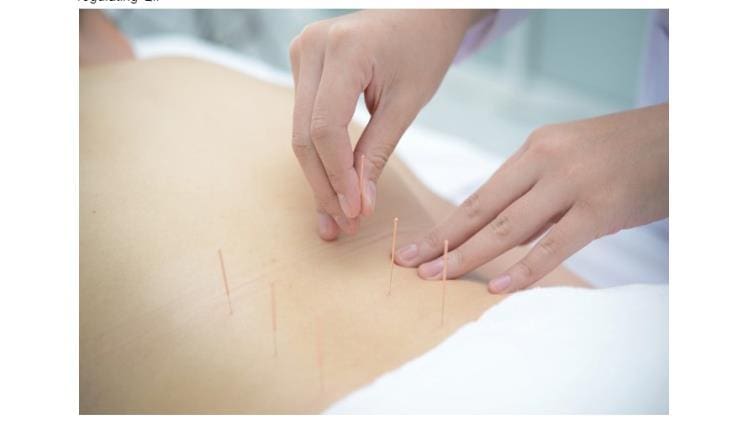In the realm of alternative medicine, Chinese acupuncture stands as a testament to centuries-old wisdom and an intricate understanding of the human body’s vital energy flow. Unlike conventional Western medicine, which predominantly relies on pharmaceuticals and surgery, Chinese acupuncture offers a holistic approach to healing. It is a practice shrouded in mystery, with origins tracing back over 2,500 years. In this exploration, we delve deep into the world of Chinese acupuncture, uncovering its history, principles, techniques, and modern applications.
A Glimpse into History
Chinese acupuncture finds its roots in ancient Chinese philosophy and cosmology. Its foundation lies in the concept of Qi (pronounced “chee”), the vital energy that flows through the body’s meridians. The earliest recorded references to acupuncture can be found in the Huangdi Neijing, or the Yellow Emperor’s Inner Canon, a seminal text dating back to the Warring States period (476-221 BCE).
According to legend, acupuncture was discovered when warriors, wounded in battle, noticed that certain ailments were alleviated when their bodies were punctured by sharp objects. This serendipitous discovery led to the development of acupuncture as a formal medical practice.
The Principle of Yin and Yang
At the heart of Chinese acupuncture lies the principle of Yin and Yang, the dualistic concept that represents opposing but interconnected forces. In the context of acupuncture, the balance of Yin and Yang within the body is crucial for maintaining health and wellness. Acupuncturists aim to harmonize these forces by inserting needles at specific points along the body’s meridians.
The Meridian System
Central to acupuncture is the concept of meridians, which are like invisible highways through which Qi flows. There are 12 main meridians, each associated with a specific organ or bodily function. Additionally, there are eight extraordinary meridians that play a more supportive role in regulating Qi.

Every meridian is further divided into acupoints, and each acupoint has unique properties and functions. By stimulating these acupoints, practitioners can influence the flow of Qi and address a wide range of physical and emotional imbalances.
Needles and Techniques
Acupuncture needles are incredibly thin, sterile, and flexible, causing minimal discomfort when inserted into the skin. Contrary to common misconceptions, acupuncture is generally not painful. Many patients describe the sensation as a slight tingling or a dull ache, which is often followed by a sense of relaxation.
Various techniques exist within the practice of acupuncture, each serving different purposes. Some common techniques include:
- Manual Acupuncture: The practitioner manually inserts and manipulates the needles to stimulate the acupoints.
- Electroacupuncture: This modern variation involves attaching electrodes to the acupuncture needles and using a mild electric current to enhance stimulation.
- Moxibustion: Involves the burning of dried mugwort (moxa) near or on acupoints to warm and stimulate them.
- Cupping: Cupping therapy involves placing cups on the skin to create a vacuum effect, promoting blood circulation and relieving muscle tension.
- Auricular Acupuncture: Focuses on stimulating acupoints on the ear to address a wide range of conditions.
Modern Applications
Chinese acupuncture has garnered widespread attention for its effectiveness in addressing a myriad of health issues. While it may not be a substitute for all conventional medical treatments, it is often used as a complementary therapy. Some modern applications of acupuncture include:
- Pain Management: Acupuncture is widely recognized for its ability to alleviate chronic pain conditions such as back pain, migraines, and arthritis.
- Stress Reduction: Many people turn to acupuncture to manage stress, anxiety, and insomnia, as it can induce a deep sense of relaxation.
- Fertility and Reproductive Health: Acupuncture is increasingly used to support fertility treatments and manage conditions like polycystic ovary syndrome (PCOS) and menstrual disorders.
- Digestive Disorders: Acupuncture may provide relief for gastrointestinal issues, including irritable bowel syndrome (IBS) and acid reflux.
- Addiction and Substance Abuse: Some individuals use acupuncture as part of addiction recovery programs to help reduce cravings and withdrawal symptoms.
The Future of Chinese Acupuncture
As the world becomes more connected and information flows freely, traditional practices like Chinese acupuncture are gaining recognition and acceptance in Western cultures. Research into the mechanisms and efficacy of acupuncture continues to grow, shedding light on the science behind this ancient practice.
In conclusion, Chinese acupuncture is a profound and multifaceted healing art that taps into the body’s innate ability to restore balance and promote wellness. Its rich history, rooted in ancient Chinese wisdom, is a testament to its enduring relevance in the modern world. Whether used as a primary or complementary therapy, acupuncture offers a unique approach to health and healing, bridging the gap between tradition and science. It is a practice that continues to inspire curiosity and awe as we explore its intricate web of meridians, acupoints, and the harmonious dance of Yin and Yang within the human body.

